The Great Pigeon Race Disaster of 97
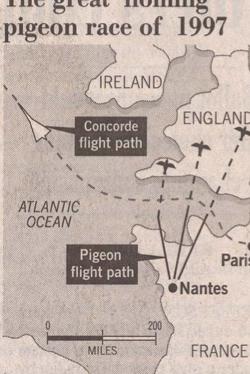 One of the great joys of science is the unexpected discovery of a wondrous ability in what you had thought to be a drab, uninteresting creature. This is why I have recently become fascinated with homing pigeons (Columba livia). These small grey birds have a remarkable ability to find their way home from distant unfamiliar places. A homing pigeon released hundreds of miles from where it lives, at a location it has never seen, will unerringly set out on a bee line homeward, flying through darkness and storm at speeds that often average 50 miles per hour, without stopping, until it arrives at its home loft hours or even days later, tired and I suspect a little smug.
One of the great joys of science is the unexpected discovery of a wondrous ability in what you had thought to be a drab, uninteresting creature. This is why I have recently become fascinated with homing pigeons (Columba livia). These small grey birds have a remarkable ability to find their way home from distant unfamiliar places. A homing pigeon released hundreds of miles from where it lives, at a location it has never seen, will unerringly set out on a bee line homeward, flying through darkness and storm at speeds that often average 50 miles per hour, without stopping, until it arrives at its home loft hours or even days later, tired and I suspect a little smug.
As someone who can get lost in a good-sized shopping mall, I am in awe of such navigating abilities. How can an unassuming little bird carry out a feat I could only match with a satellite GPS navigation system?
Navigating accurately over unfamiliar terrain as homing pigeons do demands of the birds both a sense of direction (compass sense) and a sense of location (map sense).
The compass sense of migrating birds is pretty well understood by biologists. Their usual daytime compass is the sun, but they can also navigate on cloudy days because they possess as well a magnetic sense that they can use to locate “north.”
However, how does a homing pigeon determine its location, so it can select the correct homeward bearing? This has until now remained a mystery. They don’t do it by memorizing landmarks — birds fitted with frosted contact lenses find their way home just fine. Nor do they sense local variations in the earth’s magnetic field, or smell particular odors.
How then do homing pigeons figure out where they are? A researcher at the US Geological Survey, Jonathan Hagstrum, has come up with a novel suggestion. It involves, of all things, pigeon races.
In Europe, and to a lesser extent in the United States, pigeon racing has become an international sport for which birds are carefully bred and trained. Birds from many lofts are taken to a common distant location, released together, and their return speeds timed. The most rapid return wins. Some birds are a little tardy, but typically over 90% of the birds return within a few days, and eventually almost all do.
On Sunday, June 29, 1997, a great race was held to celebrate the centenary of the Royal Pigeon Racing Association. More than 60,000 homing pigeons were released at 6:30 AM in the morning from a field in Nantes (southern France), flying to lofts all over southern England 400 to 500 miles away. By 11:00 AM the majority of the racing birds had made it out of France and were over the English Channel. They should have arrived at their lofts by early afternoon. They didn’t.
A few thousand of the birds straggled in over the next few days. Most were never seen again. In pigeon racing terms, the loss of so many birds was practically unheard of, a disaster. Any one bird could get lost, but tens of thousands?
Hagstrum, in studying this event, noticed an odd fact. At the very same time the racing pigeons were crossing the Channel, 11:00 AM, the Concorde supersonic transport (SST) airliner was flying along the Channel on its morning flight from Paris to New York. In flight the SST generates a shock wave that pounds down toward the earth, a carpet of sound almost a hundred miles wide. The racing pigeons flying below the Concorde could not have escaped the intense wave of sound. The birds that did eventually arrive at their lofts were lucky enough to be very slow racers — they were still south of the Channel when the SST passed over, ahead of them.
Perhaps, Hagstrum suggests, racing pigeons locate where they are using atmospheric infrasounds that the SST obliterated. These very low frequency sounds travel thousands of miles from their sources. That’s why you can hear distant thunder. Pigeons can hear infrasounds very well, because a pigeon ear is particularly good at detecting very low frequency sounds.
What sort of infrasounds are available to guide pigeons? All over the world, there is one infrasound pigeons should all be able to hear — the very low frequency acoustic shock waves generated by ocean waves banging against one another! Like an acoustic beacon, a constant stream of these tiny seismic waves would always say where the ocean is. Even more valuable to a racing pigeon looking for home, infrasounds reflect from cliffs, mountains, and other steep-sided features of the earth’s surface. Ocean wave infrasounds reflecting off of local terrain could provide a pigeon with a detailed sound picture of its surroundings, near and far.
Hagstrum’s suggestion explains neatly what happened to the lost pigeons in the great race of 97. The enormous wave of infrasound generated by the SST’s sonic boom would have blotted out all of the normal oceanic infrasound information. Any bird flying in its path would loose all orientation.
This same infrasound mapping sense may play an important part in the long distance navigation of other creatures. It could explain how Monarch butterflies in the US are able to find one small locality in Mexico, or how Brazilian sea turtles are able to find their way to their homes on tiny Ascension Island a thousand miles out in the Atlantic. I wish I could hear these sounds. I would never be lost again.
The Great Pigeon Race Disaster of 97 ©Txtwriter Inc.

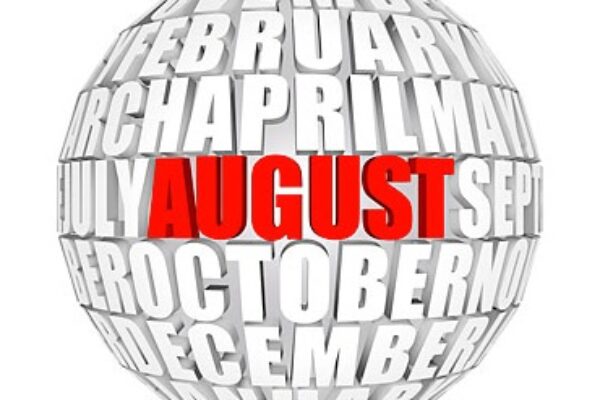
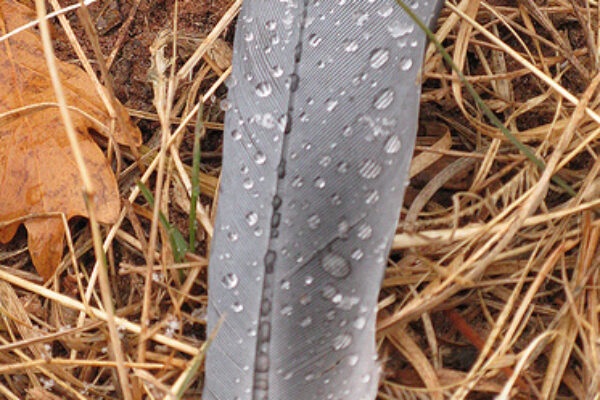
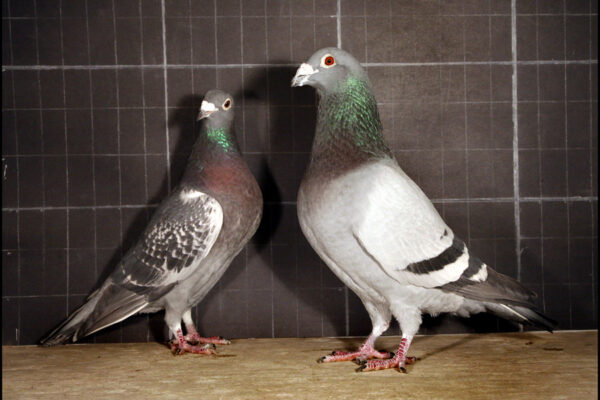
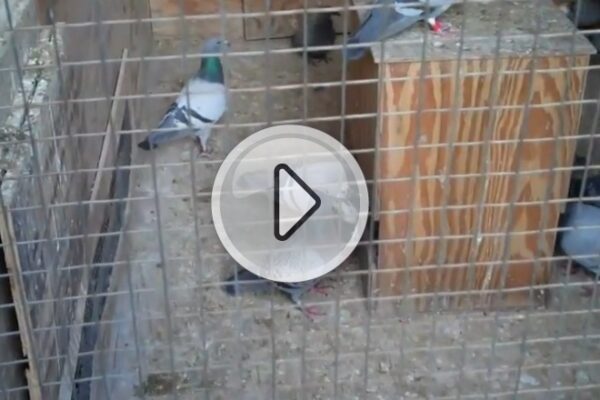

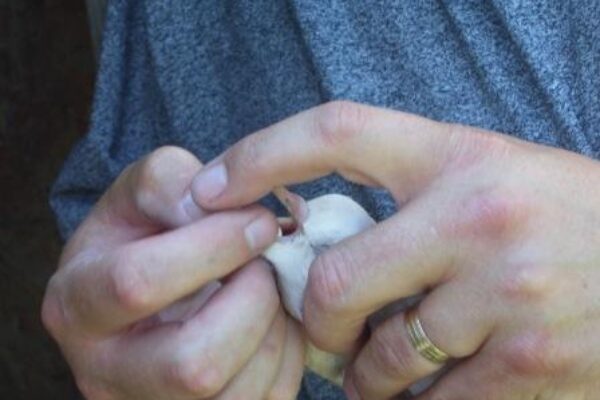


It would be easy to test this hypothesis by blocking the ears of experienced race birds and testing their homing ability over varying distances.
Very interesting article also very sad you never like to see smash races for any reason i think there
are many things we need to learn about what effects racing pigeons in a changing world of bigger
weather problems more electronics that also could effect them and other birds that migrate in the
fall that some don’t leave anymore and i not talking about those birds that are fed all summer and
winter.But we must deal with the weather differently now more than ever there is a group who call
themselves animal lovers that kill more animals in there shelters than we lose birds they make people believe they are helping all the animals of the world but there agenda is not that at all
they go after farmers etc its time people were told the truth about these people they lie and hurt
people anyway they can not what they stand for thats for sure.